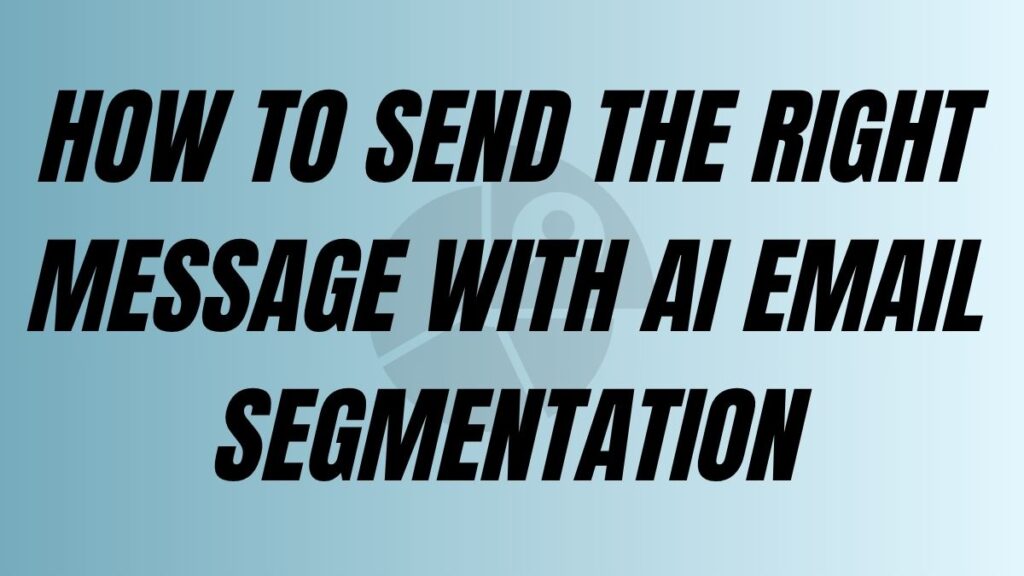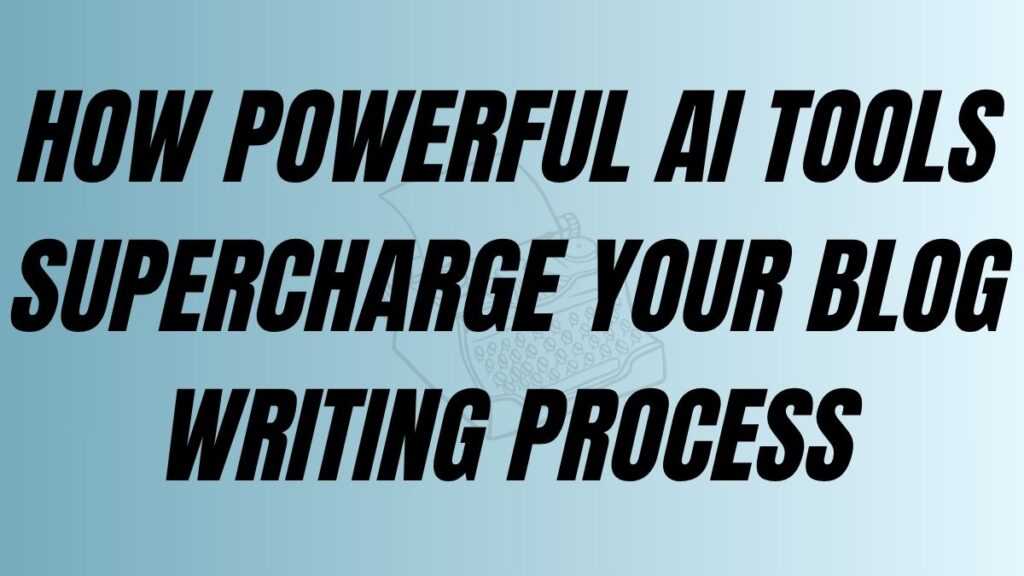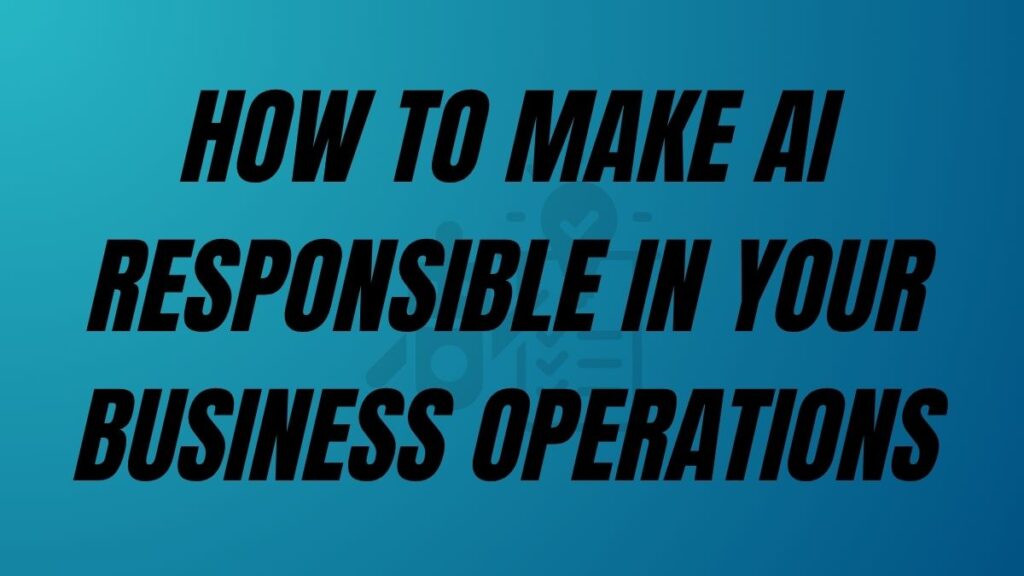Introduction
AI for Keyword Research doesn’t have to feel like chasing unicorns, does it? You’re likely tired of battling for the same old keywords. Everyone else is doing it! But what if there was a smarter way to approach this? Indeed, the SEO landscape in 2025 has changed in depth. Artificial intelligence is no longer just a buzzword. Instead, AI is a real powerhouse for keyword research.
Forget those endless hours of manual sifting. AI tools can now analyse huge amounts of data. They truly understand what users want. Plus, they can predict trends like never before. This guide will show you exactly how to use AI for keyword research. Consequently, you’ll discover valuable, untapped opportunities. Your competitors are probably missing these right now.
So, are you ready to ditch the old ways? Let’s explore the future of SEO, together!
Why AI is a Game-Changer for Keyword Research
It’s quite obvious that traditional keyword research has become a time-consuming bottleneck for many marketers. Hours spent manually digging through data, only to discover the same competitive terms everyone else is targeting. The landscape has fundamentally changed in 2025.
AI brings unprecedented capabilities to keyword research that traditional methods simply can’t match. First and foremost is the sheer speed and scale at which AI operates. While conventional tools might take hours to process data, AI can analyse millions of search queries in minutes, identifying patterns and opportunities that would be impossible to spot manually. This efficiency isn’t just convenient – it’s transformative for busy marketing teams.
Analysis depth
Beyond speed, AI delivers remarkable depth of analysis. Traditional keyword tools typically focus on basic metrics like search volume and competition. However, AI digs deeper by examining semantic relationships between terms, understanding contextual relevance, and mapping complex topic clusters. For instance, when researching “digital marketing,” AI doesn’t just find related terms—it builds comprehensive semantic networks showing how concepts like “content strategy,” “SEO techniques,” and “social media engagement” interconnect.
NLP & ML
The magic behind this capability lies in Natural Language Processing (NLP) and Machine Learning (ML). NLP allows AI to understand language the way humans do, recognizing nuances, synonyms, and contextual meanings. This means AI can identify valuable keywords that might use different terminology but express the same intent. Meanwhile, ML algorithms continuously improve their understanding by learning from data patterns, becoming increasingly accurate at predicting which keywords will drive meaningful traffic.
Consider this practical example: When analyzing the keyword “best coffee maker,” traditional tools might suggest variations like “top coffee makers” or “coffee maker reviews.” In contrast, AI might identify valuable semantic clusters around brewing methods, specific needs (“small apartment coffee makers”), or emerging trends (“sustainable coffee makers”) that traditional tools miss entirely.
User intent
Perhaps most importantly, AI excels at understanding user intent—the why behind searches. It can distinguish between informational queries (“how to brew coffee”) versus transactional ones (“buy espresso machine online”), allowing you to target keywords that align perfectly with your content goals and audience needs.
The time-saving benefit cannot be overstated. Tasks that once took days—like comprehensive competitor analysis or identifying long-tail opportunity gaps—can now be completed in hours or even minutes. This frees you to focus on strategy and content creation rather than getting lost in spreadsheets and data.
In essence, AI doesn’t just make keyword research faster—it makes it smarter, more comprehensive, and ultimately more effective at driving meaningful traffic to your site.
Top AI Keyword Research Tools & Platforms in 2025
Are you overwhelmed by the growing number of AI tools claiming to revolutionize your keyword research? You’re not alone! According to a recent survey, 76% of marketers feel confused about which AI SEO tools actually deliver results. Let’s cut through the noise and explore the best options available in 2025.
The AI keyword research landscape has evolved into several distinct categories, each with unique strengths. Understanding these differences is crucial for selecting the right tool for your specific needs.
Leading AI-Powered SEO Suites
Established SEO platforms have integrated powerful AI capabilities into their ecosystems. Semrush’s AI-driven insights now transform keyword research with their improved Keyword Research toolkit featuring Personal Keyword Difficulty (PKD%) and Topical Authority measurements. This helps you understand not just keyword metrics but how competitive those terms are specifically for your domain.
Similarly, Ahrefs has enhanced their Keyword Explorer with AI-powered brainstorming features that generate seed keyword ideas based on various presets. Their AI suggestions help uncover related terms that might not contain your seed keyword directly, perfect for building comprehensive content clusters.
ContentShake AI and Surfer SEO have emerged as powerhouses for generating SEO-friendly content based on AI keyword analysis. These tools analyze top-ranking pages for your target keywords and provide detailed insights on content structure, keyword usage, and other ranking factors that help you reverse-engineer successful content strategies.
Specialised AI Keyword Tools
Beyond the comprehensive suites, specialized tools focus exclusively on keyword research with impressive results. RankIQ, designed specifically for bloggers and content marketers, uses AI to identify low-competition keywords with high ROI potential. Their library of pre-researched keywords saves significant time in the discovery phase.
For those focused on semantic relationships, AI-powered keyword clustering tools like those from GetGenie AI and AIKTP have revolutionized how we organize keywords. These tools can process up to 5,000 keywords at once, grouping them by meaning and user intent rather than just lexical similarity. This semantic approach helps create more comprehensive content that covers topics thoroughly.
AI Chatbots for Keyword Brainstorming
Don’t overlook the power of generative AI chatbots like ChatGPT for keyword discovery. These versatile tools excel at brainstorming keyword ideas, identifying long-tail variations, and even clustering related terms. For example, you can prompt ChatGPT with “Suggest long-tail keywords for SEO strategies targeting small businesses” to generate a wealth of specific keyword ideas that might not appear in traditional tools.
5 Key Features to Look For
When evaluating AI keyword research tools, prioritize these advanced capabilities:
- Semantic clustering: Tools that group keywords by meaning and context, not just similarity
- Intent analysis: Features that categorize keywords by user intent (informational, navigational, commercial, transactional)
- Predictive forecasting: AI that identifies emerging trends before they peak
- Competitor gap analysis: Tools that reveal keywords your competitors rank for that you don’t
- Content optimization suggestions: AI that recommends how to use keywords effectively in content
Choosing the Right Tool
Your selection should be guided by your specific needs and constraints. For enterprise teams managing multiple sites, comprehensive suites like Semrush or Ahrefs may justify their higher price tags. Smaller businesses or solo marketers might benefit from more focused tools with straightforward pricing.
Consider your technical comfort level too. Some tools offer intuitive interfaces with minimal learning curve, while others provide deeper capabilities but require more expertise to leverage fully. Most importantly, look for tools that integrate well with your existing workflow to ensure adoption and consistent use.
The best approach often combines multiple tools—perhaps using a comprehensive suite for deep analysis, specialized tools for specific tasks like clustering, and AI chatbots for creative brainstorming sessions when you need fresh ideas.
Step-by-Step: Finding Untapped Opportunities with AI
Breaking into competitive SERPs feels increasingly impossible. With established content dominating top positions, finding genuine keyword opportunities requires more than basic research tactics. 67% of pages ranking in the top 10 are over two years old, making it increasingly difficult to break through with commonly targeted terms. This is where AI’s pattern recognition capabilities truly shine.
Begin your journey by identifying a few core “seed” keywords related to your business or content topic. These don’t need to be extensive—even 5-10 relevant terms will do. Then, let AI work its magic by expanding these seeds into a comprehensive keyword universe.
Start with Seed Keywords and Let AI Expand
Begin your journey by identifying a few core “seed” keywords related to your business or content topic. These don’t need to be extensive—even 5-10 relevant terms will do. Then, let AI work its magic by expanding these seeds into a comprehensive keyword universe.
For example, if you run a coffee shop, your seeds might include “specialty coffee,” “coffee brewing,” and “coffee shop.” Input these into an AI keyword tool, and watch as it generates hundreds of related terms, questions, and phrases that potential customers might search for.
What makes this approach powerful is how AI understands semantic relationships between terms. Unlike traditional tools that focus on lexical variations, AI identifies conceptually related ideas, even when they use different terminology. This leads to a much richer set of keyword possibilities.
Leverage AI for Competitor Gap Analysis
One of the most valuable applications of AI in keyword research is identifying what your competitors rank for that you don’t. This “gap analysis” reveals immediate opportunities to expand your content strategy.
Start by compiling a list of your own keywords, then identify your main competitors. AI tools can analyze your competitors’ keyword profiles and compare them against yours to reveal gaps and opportunities. The process looks like this:
- Enter your domain and your competitors’ domains into an AI-powered SEO tool
- Review the keywords they rank for that you don’t
- Filter these “gap” keywords by metrics like search volume, difficulty, and relevance
- Prioritize keywords that align with your business goals and audience needs
This approach is particularly effective because it’s based on proven success—these keywords are already working for your competitors. With AI, you can quickly identify which gaps represent the most valuable opportunities based on your specific situation.
Use AI Prompts to Discover Long-Tail Keywords
Long-tail keywords—longer, more specific phrases—often represent untapped opportunities with lower competition and higher conversion potential. AI excels at generating these valuable long-tail variations.
Try using specific prompts in AI tools like ChatGPT or specialized keyword platforms. For example:
- “Generate long-tail keywords related to sustainable coffee farming”
- “What questions do beginners ask about espresso machines?”
- “Identify problem-solving keywords for coffee brewing issues”
These prompts help AI understand exactly what type of keywords you’re looking for, resulting in highly relevant suggestions. The beauty of this approach is that AI can identify hyper-specific phrases that traditional tools might miss due to low search volume, but which collectively can drive significant targeted traffic.
Implement AI-Driven Keyword Clustering
Once you’ve gathered a substantial list of keywords, AI can help organize them into logical clusters based on semantic relationships and user intent. This clustering is crucial for building topical authority and creating comprehensive content.
AI-powered clustering tools can analyze thousands of keywords in minutes, grouping them by meaning and context rather than just similarity. This helps you:
- Identify broader topics and subtopics to structure your content strategy
- Understand relationships between different keyword groups
- Create comprehensive content that covers topics thoroughly
- Build stronger topical authority in your niche
For example, an AI clustering tool might group “how to brew pour-over coffee,” “pour-over coffee ratio,” and “best pour-over coffee makers” together, even though they use different words, because they share the same topical focus.
Validate AI-Generated Keywords
While AI excels at generating creative keyword ideas, it’s essential to validate these suggestions with traditional metrics before investing in content creation. Use your AI tool or a complementary platform to check:
- Search volume: Is there enough search interest?
- Keyword difficulty: How competitive is the term?
- CPC (cost-per-click): What’s the commercial value?
- SERP features: What type of content is Google showing for this term?
This validation step ensures you focus your efforts on keywords with real potential. Remember that sometimes the most valuable keywords aren’t those with the highest search volume, but rather those with the perfect balance of decent volume, manageable competition, and high relevance to your business.
By following this step-by-step approach, you’ll discover keyword opportunities that your competitors are likely missing, giving you a significant advantage in your SEO strategy.
Beyond Keywords: Using AI to Decode Search Intent
The disconnect between keyword volume and actual business results frustrates even experienced SEO professionals. High rankings for the wrong terms lead to traffic that never converts, wasting both time and resources. Intent is the missing piece of the puzzle.
AI has revolutionized how we decipher the real motivation behind search queries. Traditional keyword research might tell you that “coffee makers” gets 50,000 searches monthly, but AI can reveal whether those searchers want to buy one, learn how they work, compare brands, or find repair instructions.
Understanding the Four Types of Search Intent
AI has revolutionized how we decipher the real motivation behind search queries. Traditional keyword research might tell you that “coffee makers” gets 50,000 searches monthly, but AI can reveal whether those searchers want to buy one, learn how they work, compare brands, or find repair instructions.
Modern AI tools can categorize keywords into four primary intent categories:
- Informational: Users seeking knowledge or answers (“how to use a French press”)
- Navigational: Users looking for a specific website or page (“Starbucks near me”)
- Commercial: Users researching products before purchasing (“best espresso machines 2025”)
- Transactional: Users ready to complete an action or purchase (“buy Breville espresso machine”)
By understanding which category your target keywords fall into, you can create content that precisely matches what users expect to find. This alignment significantly improves engagement metrics, which in turn boosts your rankings.
Mapping Keywords to the Customer Journey
One of AI’s most powerful applications is its ability to connect keywords to specific stages of the customer journey. This creates a strategic framework for your content development.
For example, AI analysis might reveal that:
- Early awareness stage: People use broad, informational queries like “benefits of specialty coffee”
- Consideration stage: Searches become more specific, like “single-origin vs. blend coffee”
- Decision stage: Queries show clear purchase intent, such as “best Ethiopian coffee beans to buy”
With these insights, you can develop targeted content for each stage, ensuring you’re present throughout the entire customer journey. AI tools can automatically categorize thousands of keywords by journey stage, helping you identify gaps in your content strategy.
Crafting Intent-Optimised Content
Once AI has helped you understand the intent behind keywords, you can create content specifically designed to satisfy that intent. This leads to higher engagement, longer time on page, and better conversion rates.
For informational queries, comprehensive guides with clear explanations perform best. For commercial intent, comparison tables and detailed reviews drive engagement. For transactional searches, streamlined pages with clear calls-to-action convert more effectively.
AI doesn’t just identify intent – it can also analyze top-performing content for each intent type, revealing patterns in:
- Content length and depth
- Media usage (images, videos, infographics)
- Page structure and formatting
- Types of information included
These insights help you create content that truly satisfies user needs rather than simply incorporating keywords.
Spotting Emerging Trends Before They Mainstream
Perhaps most exciting is AI’s ability to identify shifting search patterns and emerging interests before they become mainstream trends. By analyzing search data over time, AI can detect subtle changes in query patterns that might indicate growing interest in new topics.
For instance, AI analysis might notice increasing searches for “sustainable coffee practices” or “specialty coffee subscriptions” before these become highly competitive terms. This predictive capability gives you a tremendous advantage – you can create content for emerging topics before your competitors even recognise the trend.
Some advanced AI tools can even correlate search trends with social media mentions, news coverage, and other signals to provide a comprehensive view of emerging topics in your industry. This multi-channel analysis offers a more nuanced understanding of where audience interest is heading.
By leveraging AI to decode search intent, you move beyond simplistic keyword targeting to a sophisticated understanding of user needs. This deeper insight allows you to create content that genuinely serves your audience while simultaneously improving your SEO performance.
Integrating AI Keyword Insights into Your SEO & Content Workflow
I don’t know if it’s me but I quite often find myself gathering great keyword insights but struggle to implement them effectively. A recent survey says that 72% of marketers identify “translating data into actionable strategies” as their biggest challenge with AI tools.
The gap between data collection and implementation remains the biggest challenge in SEO. Teams often amass valuable keyword insights that never translate into actual content or website improvements. Bridging this execution gap requires systematic processes.
The first step is transforming raw keyword data into concrete content plans. AI doesn’t just identify keywords—it reveals the questions, problems, and interests of your audience. Each keyword cluster represents a content opportunity.
Translating Keywords into Content Ideas
The first step is transforming raw keyword data into concrete content plans. AI doesn’t just identify keywords—it reveals the questions, problems, and interests of your audience. Each keyword cluster represents a content opportunity.
Start by organizing your AI-discovered keywords into content types:
- Comprehensive guides for broad informational terms
- Comparison posts for commercial investigation keywords
- Product pages for transactional terms
- FAQ content for question-based queries
- Tutorial content for how-to searches
For example, if AI identifies a cluster around “sustainable coffee farming practices,” this could become a cornerstone piece of content with sections addressing environmental impact, fair trade certification, and organic growing methods. The AI-identified related terms become your subheadings and supporting points.
What makes this approach powerful is that you’re building content directly aligned with validated search demand. Rather than guessing what your audience wants to know, you’re creating resources that address their actual queries.
Optimising Existing Content with Semantic Keywords
Don’t limit your focus to new content creation. One of the quickest wins comes from enhancing your existing content with AI-identified semantic keywords. This process involves:
- Running your current top-performing pages through AI analysis
- Identifying semantic gaps—related terms that your content doesn’t currently include
- Naturally incorporating these terms to improve topical coverage
For instance, if you have a guide on coffee brewing methods, AI might reveal that you’re missing semantically related terms like “water temperature,” “grind consistency,” or “extraction time”. Adding these terms—and more importantly, the concepts they represent—makes your content more comprehensive and relevant to search engines.
This semantic enrichment signals to search engines that your content thoroughly covers the topic, potentially improving rankings for multiple related queries. The key is incorporating these terms naturally, focusing on enhancing value rather than keyword stuffing.
Informing Website Structure and Internal Linking
AI keyword insights can transform how you structure your entire website. By analyzing semantic relationships between keywords, AI helps you develop a topic-based architecture that builds authority in your key subject areas.
Use AI-generated keyword clusters to:
- Create logical content hierarchies (pillar pages supported by cluster content)
- Develop strategic internal linking patterns that reinforce topical relevance
- Identify opportunities for new content hubs around emerging topics
For example, if AI analysis shows strong relationships between “specialty coffee,” “brewing methods,” and “coffee origins,” you might create a content hub structure with a comprehensive guide on specialty coffee linking to detailed pages on each brewing method and coffee origin.
This structured approach doesn’t just help users navigate your content—it signals to search engines that your site has depth and authority on these topics, potentially boosting rankings across the entire subject area.
Measuring ROI and Impact
Implementing AI keyword insights is only valuable if you can measure the results. Establish clear metrics to track the performance of your AI-driven keyword strategy:
- Ranking improvements for target keywords
- Organic traffic growth to optimized pages
- Changes in engagement metrics (time on page, bounce rate)
- Conversion rates from organic traffic
- Growth in ranking keywords overall
Set up tracking dashboards that compare performance before and after implementing AI insights. This before-and-after analysis helps quantify the value of your AI investment and identifies which strategies are delivering the best returns.
Many AI tools now include performance tracking features that automatically monitor these metrics, making it easier to demonstrate ROI. Look for tools that provide visual reports showing the correlation between implemented changes and performance improvements.
By systematically integrating AI keyword insights into your content strategy, website architecture, and optimization processes, you transform theoretical data into practical advantages. This structured approach ensures that your investment in AI keyword research translates into measurable improvements in visibility, traffic, and ultimately, business results.
Conclusion
So, are you ready to transform your keyword research from a chore into a strategic advantage? As we’ve explored, AI is no longer just hype in 2025 – it’s an indispensable ally for uncovering those vital, untapped keyword opportunities. By harnessing AI’s power to analyze data, understand intent, pinpoint competitor weaknesses, and even predict trends, you gain a significant competitive edge. Remember, it saves time and delivers deeper insights!
Don’t let your strategy stagnate. Start experimenting with AI keyword tools today. Integrate these powerful capabilities into your workflow, focus on satisfying user intent, and watch your SEO performance climb. What AI technique are you most excited to implement first? Share your thoughts!
FAQs About Using AI for Keyword Research
Is AI keyword research better than traditional methods?
AI enhances traditional methods. It processes vast data faster, uncovers semantic links, and analyzes intent deeply, making research more efficient and insightful, not replacing fundamentals.
Do I need technical AI skills to use these tools?
Not usually! Most AI keyword tools are designed with user-friendly interfaces. Understanding basic SEO concepts is helpful, but deep AI expertise isn’t required to gain value.
Can AI find completely new keywords no one searches for?
AI excels at finding emerging trends and hyper-specific long-tail keywords that might have very low or currently unreported search volume, representing future potential or niche intent.
Are AI keyword research tools expensive?
Costs vary. Some AI features are included in existing SEO platforms (like Semrush/Ahrefs), others are standalone tools with different pricing tiers, and basic AI brainstorming can even be done freely.





